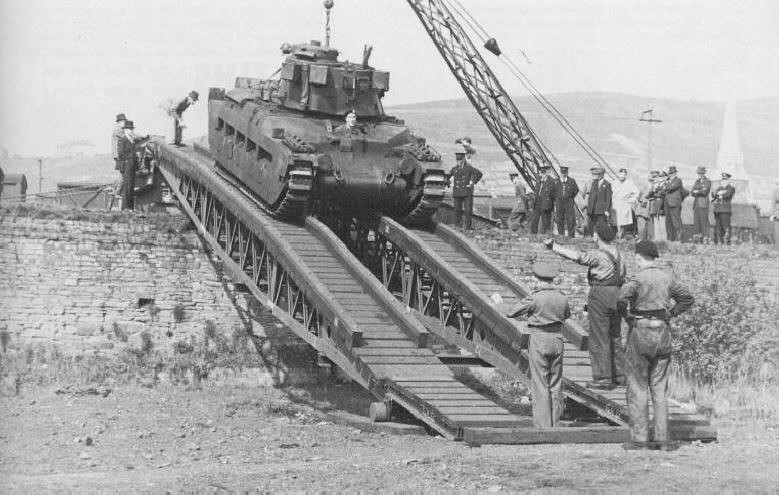Swansea Docks at War
Swansea Docks played its part in the war effort during the Second World War. Some of the cargoes handled are shown below.
Loading a 22,000 lb bomb
14 of these 22,000lb bombs were shipped aboard the ss Frederick C Hicks in August 1945
Bombs in N Shed 16th June 1944
American seaplane tender U.S.S. 'Albemarle' arriving at Swansea in September, 1943
The photos below show the transfer of P47 Thunderbolt fighter aircraft from the 'Empire Milner' to the U.S. auxiliary aircraft carrier 'Ganandoc' on the 16th August 1944
The three photos below show Tank Landing Ships waiting to enter the King's Dock Lock on 24th April 1944
Swansea Docks was the site for the testing of experimental tank ramps, April, 1943.
Mounting ramp to the turntable
On the turntable ready to turn
Driving down the ramp
Swansea Docks became the target for enemy aerial bombardment. See the damage caused to the docks here
War damaged shipping at Swansea
For many thousands of U.S. servicemen, Swansea was their first taste of the conflict in Europe. See more here
Swansea Docker Albert was decorated by the Russians!
Frank Hopkins worked for Swansea Harbour Trust, and served as an infantryman in the 1914-1918 war. He was mistakenly thought to be killed in action - see photos and letters
Also Ernie Beynon, twice wounded whilst serving in the Welch Regiment, later a Shunter at Swansea Docks.
The German E-Boat repaired at Swansea
In the late 1940s / early1950s a German E boat was purchased at Milford by George Brothers Engineering Ltd. Marine Engineer Neville Ledger and an apprentice Bill Davies began the long task of overhauling the engines and repairing all the controls, and making her seaworthy. This took 6 months to complete. An unforeseen problem at Milford was the power of the engines which caused the skipper sailing her from Milford to Swansea to lose control and land the vessel on a mud bank. By going full astern she was removed from the mud bank and re-entered the dock where further repairs were carried out. When they were completed she eventually made her way safley to Swansea, berthing in the South Dock on the left hand side of the lockgates as viewed from the River Tawe. I remember as a schoolboy going aboard her.
There was a lot of work to be done other than on the main engines i.e. accommodation, lighting, and the removal of anything left over from the war. When all the repairs were completed she was locked out of the dock, having been sold for £20,000, and was making her way to Gibraltar, Spain or Africa (it was not certain what her final destination would be). Again, control of the vessel was lost and she struck the West Pier, causing damage to the hull. Neville Ledger was on the West Pier at 6 o' clock that morning to see her off, and was able to jump aboard and remonstrate with the skipper who had been instructed to use only the centre engine when in confined waters. It nearly came to blows.
Repairs to the hull had to be carried out and, once completed, the boat was finally on her way. Apprentice Bill Davies, against the advice of Neville Ledger sailed with her, but the payment promised for his services was not forthcoming and he had to make his own way back home. Neville always thought the purchasers were a dubious bunch, and he proved to be right.
These photos show the E-Boat during repairs in South Dock, Swansea
Many thanks to Rob Ledger, the son of Neville Ledger, for contributing to this article.














